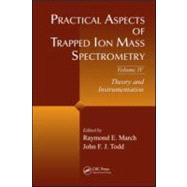Practical Aspects of Trapped Ion Mass Spectrometry, Volume IV: Theory and Instrumentation
, by March; Raymond E.- ISBN: 9781420083712 | 1420083716
- Cover: Hardcover
- Copyright: 5/25/2010
Reflecting the substantial increase in popularity of quadrupole ion traps and Fourier transform ion cyclotron resonance (FT-ICR) mass spectrometers, Practical Aspects of Trapped Ion Mass Spectrometry, Volume IV: Theory and Instrumentation explores the historical origins of the latest advances in this expanding field. It covers new methods for trapping ions, such as the Orbitrap'„˘, the digital ion trap (DIT), the rectilinear ion trap (RIT), and the toroidal ion trap; the development and application of the quadrupole ion trap (QIT) and the quadrupole linear ion trap (LIT); and the introduction of high-field asymmetric waveform ion mobility spectrometry (FAIMS).After a combined appreciation and historical survey of mass spectrometry and a discussion of how improved capabilities for microfabrication have led to interest in arrays of ion traps, the book examines the theory and practice of the Orbitrap mass analyzer, the rectangular waveform-driven DIT mass spectrometer, FAIMS, and ion traps with circular geometries. It next discusses ion accumulation for increasing sensitivity in FT-ICR spectrometry, a radio frequency-only-mode event for Penning traps in FT MS, and an FT operating mode applied to a 3D-QIT. The text then presents three behavioral aspects of quadrupole rod sets, before illustrating the development of the 3D-QIT in recent years. The final chapters explore photodissociation in ion traps and the chemical and photochemical studies of metal dication complexes in a 3D-QIT.In this volume that spans twenty-one chapters, a stellar panel of leading experts and up-and-coming researchers presents a cohesive, global, and up-to-date view of the practical aspects of using trapped ion devices. A companion to Volume V: Applications of Ion Trapping Devices , the book authoritatively covers the theory involved as well as the instrumentation currently used in this dynamic field.







